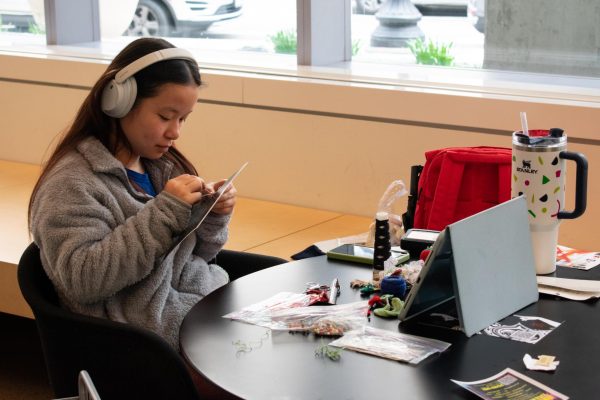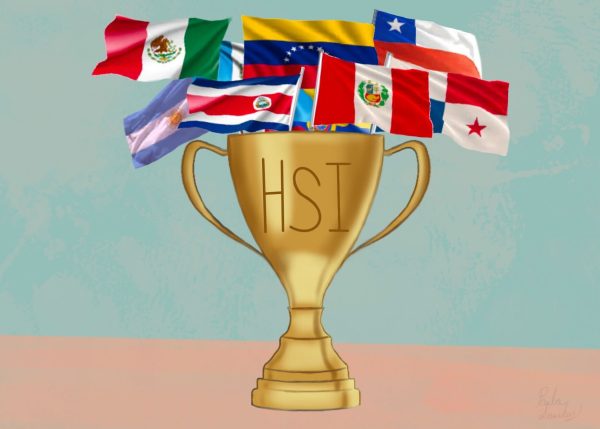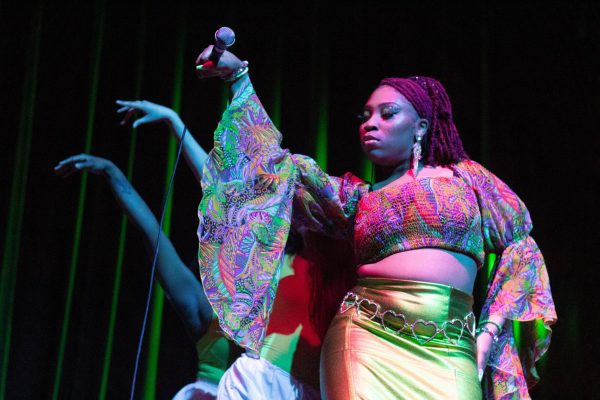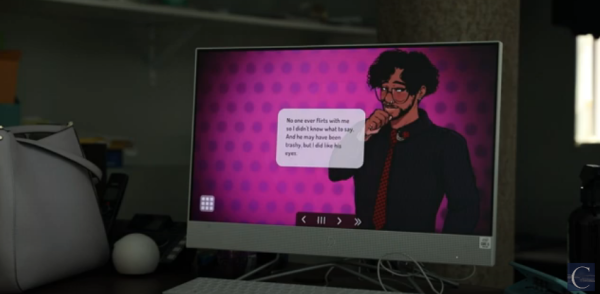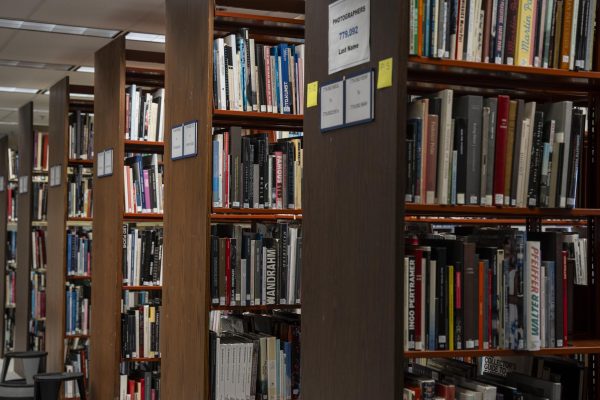Hidden Treasures at Columbia
October 26, 1998
Bruno Vandervelt
Staff Writer
Whether you’re an art student or not, the current group exhibition being held in the Columbia College Art Gallery at the 11th St. Campus may be among the best-kept secrets around here. “Mascaras/Mas Caras,” which runs until Nov. 20, includes introspective works by ten contemporary Latino artists.
Translated literally, “Mascaras/Mas Caras” means “Masks/More Faces”; in this exhibit, the ten artists focus on identity with reference to the physical and imagined “masks” one may use to conceal or disguise it. The artists have used mixed media (that is, more than just paint and canvas) to create cutting-edge and sometimes humorous works while drawing upon basic sources of traditional Latin American art forms.
Maria Enriquez de Allen’s “Blooming Lady” appears on brochures representing the exhibit. The 1989 marker-on-paper piece features a whimsical visage peering out over a kaleidoscopic blooming costume. The symmetry, the use of all the colors in the Crayola box, and the hasty polka-dotting give life to the eye-catching work. The simplicity of it is funny—it looks like art from a third-grader’s first acid trip.
Fidel Castro. Mikhail Gorbachev. Mao Zedong…These three Communists have all altered history in some way, but have they been considered for sainthood? Alfonso Lirani believes they should, his tongue burrowed in cheek. His 1996 politically-charged trio of paintings—”St. Fidel”, “St. Gorby”, and “St. Mao” feature humorous likenesses of the men under the influence of American capitalism.
One of the most engaging displays is Alfredo Martinez’s miniature mask collection. These masks are not designed for human use, rather, they are made from metal pieces humans have long discarded. Martinez uses plumbing equipment, pipes, screens, faucets, springs, levers, and other metallic detritus to create a smaller, derelict version of the prehistoric mask displays seen at museums.
Most of the works are recognizably Latin American-influenced. Mario Castillo’s “Chupi Face” series depicts a man’s troubled face in various Picasso-like poses and hues. Esperanza Gama’s “My Grandfather” focuses on religion, its 3-dimensional heart bleeding the colors of the Mexican flag. “Homage to Carlos A. Cortez,” a linocut by Rene H. Arceo Frutos, has a distinctly Central American feel.
Perhaps the most intriguing display is Michael Hernandez de Luna’s computer-generated laser prints. They’re not ordinary prints, mind you; they’re mock stamps. The zany stamps feature, among other things, breasts and Newt Gingrich. The work elicits some chuckles that end with a gasp when you realize that de Luna actually sent mail with these fake stamps. The stamps were approved and canceled by the postal sector, and de Luna includes the envelopes in the display to prove it. Talk about art performing a function!
Sadly, the Gallery has resembled a morgue the past several weeks. Despite the awe-inspiring art, turnout at the exhibit is heinously low. “We’re never busy,” said Dan Johnson, a Columbia student who was manning the watch at the gallery last week.
The Columbia College Art Gallery is open 10 a.m. to 4 p.m. Monday through Friday. And, oh yeah- it’s free!



